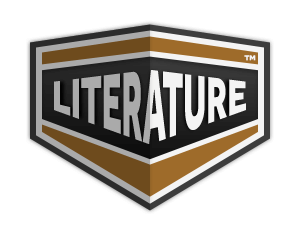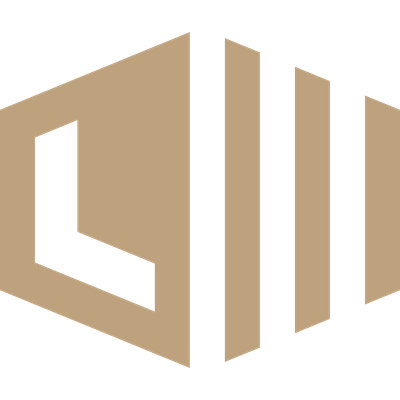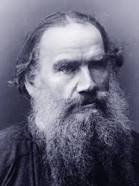On Popular Education Page #5
"On Popular Education" is a thought-provoking essay by Leo Tolstoy in which the renowned Russian author explores the role of education in shaping individuals and society. Written in 1862, Tolstoy critiques the existing educational systems of his time, advocating for a more accessible, practical, and moral approach to learning. He emphasizes the importance of fostering critical thinking and moral values over rote memorization, urging educators to nurture the innate curiosity of learners. Tolstoy's reflections serve as a powerful call for a more humane and equitable educational framework that empowers individuals to contribute meaningfully to society.
already, he is teaching them anything at all. Just as arbitrarily are the children taught combinations in arithmetic and the decomposition of numbers according to a certain method and order, which have their foundation only in the fancy of the teacher. Mr. Evtushévski says: "Four. (1) The formation of the number. On the upper border of the board the teacher places three cubes together--I I I. How many cubes are there here? Then a fourth cube is added. And how many are there now? I I I I. How are four cubes formed from three and one? We have to add one cube to the three. "(2) Decomposition into component parts. How can four cubes be formed? or, How can four cubes be broken up? Four cubes may be broken up into two and two: II + II. Four cubes may be formed from one, and one, and one, and one more, or by taking four times one cube: I + I + I + I. Four cubes may be broken up into three and one: III + I. It may be formed from one, and one, and two: I + I + II. Can four cubes be put together in any other way? The pupils convince themselves that there can be no other decomposition, distinct from those already given. If the pupils begin to break the four cubes in this way: one, two, and one, or, two, one and one; or, one and three, the teacher will easily point out to them that these decompositions are only repetitions of what has been got before, only in a different order. "Every time, whenever the pupils indicate a new method of decomposition, the teacher places the cubes on a ledge of the blackboard in the manner here indicated. Thus there will be four cubes on the upper ledge; two and two in a second place; in a third place the four cubes will be separated at some distance from each other; in a fourth place, three and one, and in a fifth one, one, and two. "(3) Decomposition in order. It may easily happen that the children will at once point out the decomposition of the number into component parts in order; even then the third exercise cannot be regarded as superfluous: Here we have formed four cubes of twos, of separate cubes, and of threes,--in what order had we best place the cubes on the board? With what shall the decomposition of the four cubes begin? With the decomposition into separate cubes. How are four cubes to be formed from separate cubes? We must take four times one cube. How are four cubes to be formed from twos, from a pair? We must take two twos,--twice two cubes, two pairs of cubes. How shall we afterward break up the four cubes? They can be formed of threes: for this purpose we take three and one, or one and three. The teacher explains to the pupils that the last decomposition, that is, 1 1 2, does not come under the accepted order, and is a modification of one of the first three." Why does Mr. Evtushévski not admit this last decomposition? Why must there be the order indicated by him? All that is a matter of mere arbitrariness and fancy. In reality, it is apparent to every thinking man that there is only one foundation for any composition and decomposition, and for the whole of mathematics. Here is the foundation: 1 + 1 = 2, 2 + 1 = 3, 3 + 1 = 4, and so forth,--precisely what the children learn at home, and what in common parlance is called counting to ten, to twenty, and so forth. This process is known to every pupil, and no matter what decomposition Mr. Evtushévski may make, it is to be explained from this one. A boy that can count to four, considers four as a whole, and so also three, and two, and one. Consequently, he knows that four was produced from the consecutive addition of one. Similarly he knows that four is produced by adding twice one to two, just as he knows twice one is two. What, then, are the children taught here? That which they know, or that process of counting which they must learn according to the teacher's fancy. The other day I happened to witness a lesson in mathematics according to Grube's method. The pupil was asked: "How much is 8 and 7?" He hastened to answer and said 16. His neighbour, too, was in a hurry and, without raising his left hand, said: "8 and 8 is 16, and one less is 15." The teacher sternly stopped him, and compelled the first boy to add one after one to 8, until he came to 15, though the boy knew long ago that he had made a blunder. In that school they had reached the number 15, but 16 was supposed to be unknown yet. I am afraid that many people, reading all these long refutals of the methods of object instruction and counting according to Grube, which I am making, will say: "What is there here to talk about? Is it not evident that it is all mere nonsense which it is not worth while to criticize? Why pick out the errors and blunders of a Bunákov and Evtushévski, and criticize what is beneath all criticism?" That was the way I myself thought before I was led to see what was going on in the pedagogical world, when I convinced myself that Messrs. Bunákov and Evtushévski were not mere individuals, but authorities in our pedagogics, and that what they prescribe is actually carried out in our schools. In the backwoods we may find teachers, especially women, who spread Evtushévski's and Bunákov's manuals out before them and ask according to their prescription how much one feather and one feather is, and what a hen is covered with. All that would be funny if it were only an invention of the theorist, and not a guide in practical work, a guide that some follow already, and if it did not concern one of the most important affairs of life,--the education of the children. I was amused at it when I read it as theoretical fancies; but when I learned and saw that that was being practised on children, I felt pity for them and ashamed. From a theoretical standpoint, not to mention the fact that they faultily define the aim of education, the pedagogues of this school make this essential error, that they depart from the conditions of all instruction, whether this instruction be on the highest or lowest stage of the science, in a university or in a popular school. The essential conditions of all instruction consist in selecting the homogeneous phenomena from an endless number of heterogeneous phenomena, and in imparting the laws of these phenomena to the students. Thus, in the study of language, the pupils are taught the laws of the word, and in mathematics, the laws of the numbers. The study of language consists in imparting the laws of the decomposition and of the reverse composition of sentences, words, syllables, sounds,--and these laws form the subject of instruction. The instruction of mathematics consists in imparting the laws of the composition and decomposition of the numbers (but I beg to observe,--not in the process of the composition and the decomposition of the numbers, but in imparting the laws of that composition and decomposition). Thus, the first law consists in the ability of regarding
Translation
Translate and read this book in other languages:
Select another language:
- - Select -
- 简体中文 (Chinese - Simplified)
- 繁體中文 (Chinese - Traditional)
- Español (Spanish)
- Esperanto (Esperanto)
- 日本語 (Japanese)
- Português (Portuguese)
- Deutsch (German)
- العربية (Arabic)
- Français (French)
- Русский (Russian)
- ಕನ್ನಡ (Kannada)
- 한국어 (Korean)
- עברית (Hebrew)
- Gaeilge (Irish)
- Українська (Ukrainian)
- اردو (Urdu)
- Magyar (Hungarian)
- मानक हिन्दी (Hindi)
- Indonesia (Indonesian)
- Italiano (Italian)
- தமிழ் (Tamil)
- Türkçe (Turkish)
- తెలుగు (Telugu)
- ภาษาไทย (Thai)
- Tiếng Việt (Vietnamese)
- Čeština (Czech)
- Polski (Polish)
- Bahasa Indonesia (Indonesian)
- Românește (Romanian)
- Nederlands (Dutch)
- Ελληνικά (Greek)
- Latinum (Latin)
- Svenska (Swedish)
- Dansk (Danish)
- Suomi (Finnish)
- فارسی (Persian)
- ייִדיש (Yiddish)
- հայերեն (Armenian)
- Norsk (Norwegian)
- English (English)
Citation
Use the citation below to add this book to your bibliography:
Style:MLAChicagoAPA
"On Popular Education Books." Literature.com. STANDS4 LLC, 2025. Web. 23 Feb. 2025. <https://www.literature.com/book/on_popular_education_3979>.








Discuss this On Popular Education book with the community:
Report Comment
We're doing our best to make sure our content is useful, accurate and safe.
If by any chance you spot an inappropriate comment while navigating through our website please use this form to let us know, and we'll take care of it shortly.
Attachment
You need to be logged in to favorite.
Log In